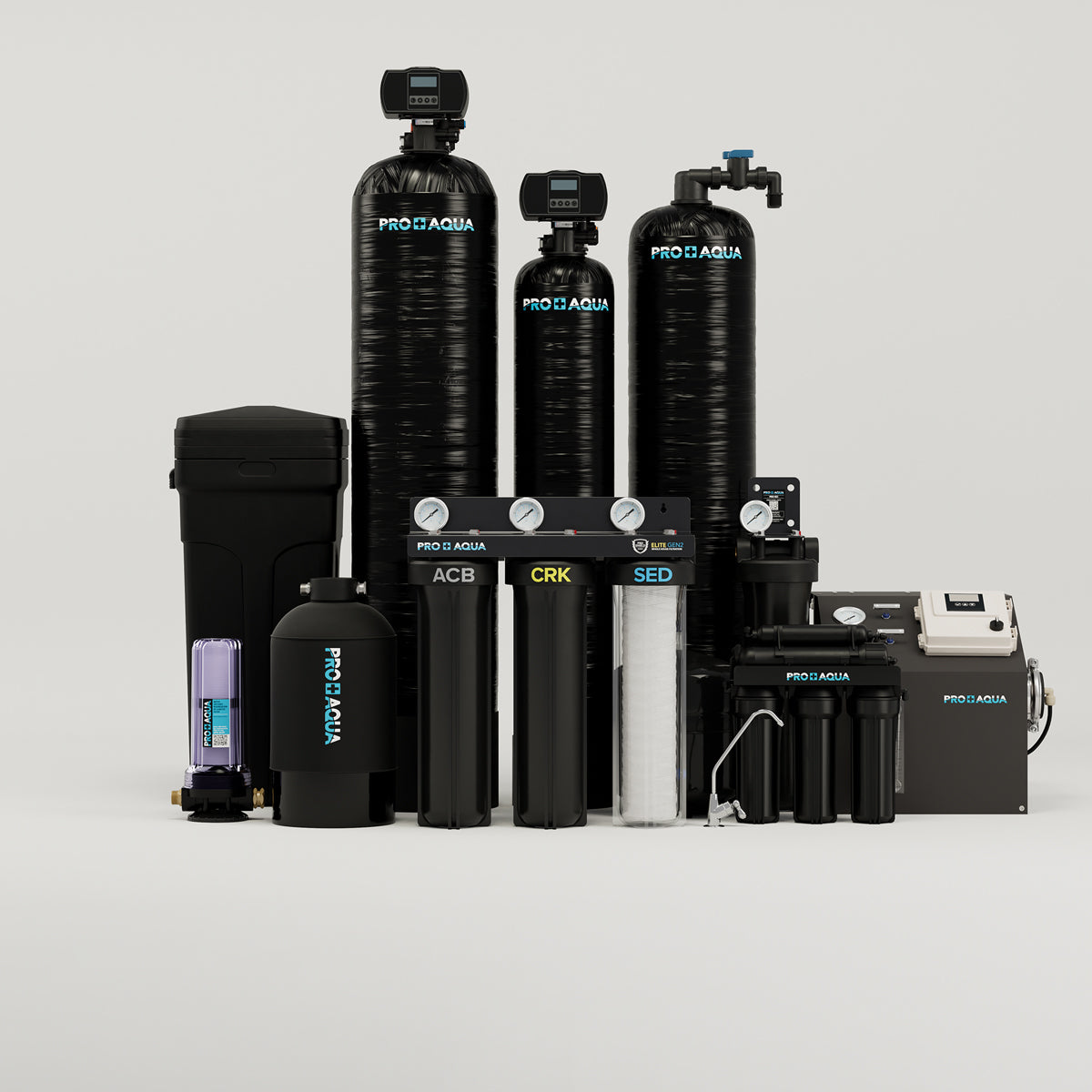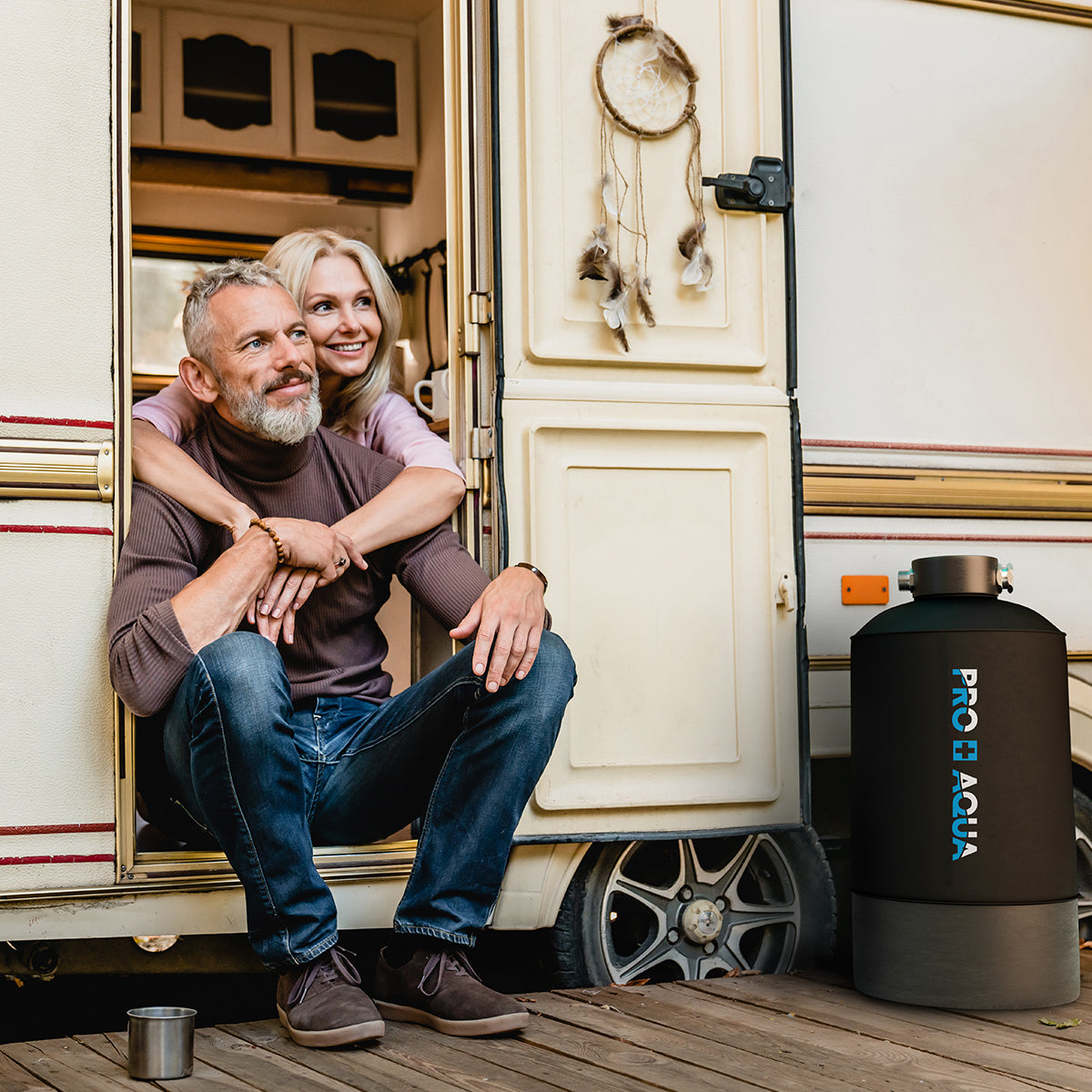Walk into any coffee shop or café and ask if they use reverse osmosis water for coffee, and, most likely, they do. Major coffee chains (including the one with the famous green logo) install a commercial reverse osmosis system in every cafe location.
Why? To make sure that coffee in California tastes the same as coffee in Dubai. This consistency isn't just for better coffee, it's about protecting their brand through maintaining water quality, taste, flavors, aroma, and appearance.
Why Water Quality Matters for Coffee Brewing
Since coffee is made up of 99% water, the quality of your water directly impacts the taste, aroma, and mouthfeel of your brew.
Water varies from city to city—Some municipal water supplies are relatively soft, while others have high mineral content with calcium, magnesium, iron, and even contaminants.
That’s why the best water for coffee brewing needs to be pure and balanced. According to the Specialty Coffee Association (SCA), ideal water for coffee should be clear, chlorine-free, and close to a neutral pH of 7.

RO Water and the Coffee Cupping Process
During a professional coffee tasting or “cupping,” Roast Masters carefully evaluate various flavor notes, nuances, and aromas that are detected.
To get the most accurate taste profile, they use water that doesn’t introduce unwanted minerals or off-flavors. The water used in cupping is typically from a RO system because the water it produces is 99% free of contaminants and ultimately pure.
Protecting Expensive Coffee Equipment
Another major benefit of installing a commercial reverse osmosis system for a coffee shop is protecting your coffee machines from limescale buildup. Limescale forms when minerals in hard water stick to boilers, heating elements, and internal pipes.
For context, a 3-group La Marzocco espresso machine can cost up to $24,000, and a dual coffee brewer can cost $2,000 each. Even small parts, like heating elements or steam valves, are expensive to replace. When you multiply these costs across multiple machines, hard water damage quickly adds up.
By using RO water, you prevent limescale and help your machines run efficiently for years. This reduces costly maintenance and replacement expenses.

Limescale can also develop with cold water, but at temperatures between 89-104 degrees Fahrenheit, limescale production is accelerated.
This is exacerbated by the constant water filling and evaporation in boilers and heating elements. As heating elements get hot and water evaporates, minerals in the water cling to metal parts. When this process is repeated, limescale build-up is inevitable.
This will eventually degrade the performance of machines and also affect the flavor of coffee. However, if an RO system is used, limescale buildup will not occur since there are no contaminants or mineral content in the water, making it ideal for espresso machines and commercial coffee makers.
How Much Water Does a Coffee Shop Use?
According to Barista Guild, a busy coffee shop will go through 600-1000 gallons of water per day—far more than a residential RO system can handle. Most home systems only produce 50–100 gallons per day.
That’s why a high-capacity commercial RO system, like the PRO+AQUA PRO-RO, is ideal. It can produce up to 1,000 gallons per day, enough for high-volume coffee shops.
Create the Perfect Water Profile for Your Coffee Beans
One unique advantage of an RO system is its customizable water output. With built-in needle valves, you can adjust the total dissolved solids (TDS) by blending pure RO water with a small amount of source water.
This allows roasters and baristas to fine-tune their water profile for different beans. Some coffees benefit from trace minerals that enhance smokey or earthy notes; others shine with ultra-pure water. A customizable RO system gives you complete control.
Commercial Reverse Osmosis: A Smart Long-Term Investment
A commercial reverse osmosis system for coffee shops is not just an expense — it’s an investment that pays for itself. The cost of the PRO+AQUA PRO-RO is under $1,600, which is about the same as replacing just a few damaged parts due to limescale.
To give you an idea on how much parts are for a typical 3 group La Marzocco espresso machine, here’s a list of items that usually get corroded if hard water is used instead of RO water:
- Heating element - $180
- Steam boiler - $740
- Water pump - $370
- Steam valve/nozzle - $250
- Pre-Heater - $206
- Boiler valves - $98
- Water inlet manifold - $70
When added up, the parts above cost roughly $1,690— more than the cost of the PRO-RO. We’re not saying that the PRO-RO is going to prevent your machines from needing service or those parts, but what it does do is help your machines last longer by eliminating the minerals that cause limescale buildup.
Think of the commercial reverse osmosis system as a money maker for your coffee shop. It helps make your coffee taste better and it helps prevent costly repairs caused by minerals found in your source water.
Final Thoughts: Is a Reverse Osmosis System Worth It for Coffee Shops?
If you want consistent taste, superior flavor, and longer-lasting equipment, installing a reverse osmosis system for coffee brewing is the clear choice. Pure, balanced water is the foundation of exceptional coffee — and it protects your valuable investment in professional brewing equipment.
Whether you’re opening a new café or upgrading an existing one, choosing the right commercial reverse osmosis system can make your coffee taste better and your business more profitable.








Leave a comment
This site is protected by hCaptcha and the hCaptcha Privacy Policy and Terms of Service apply.